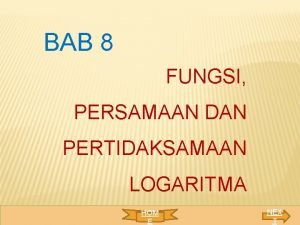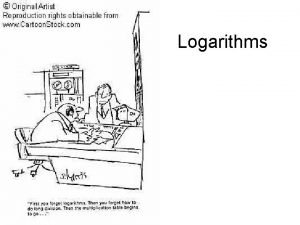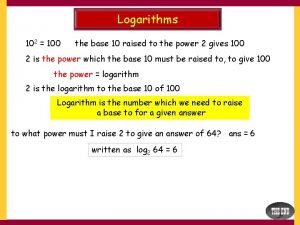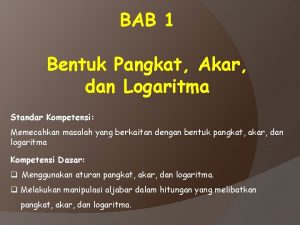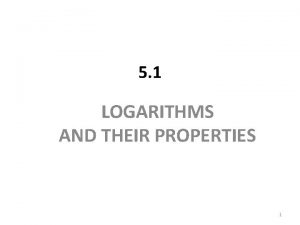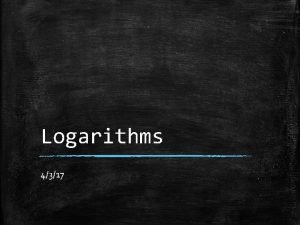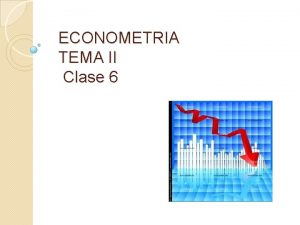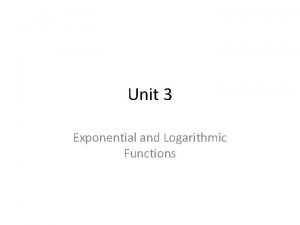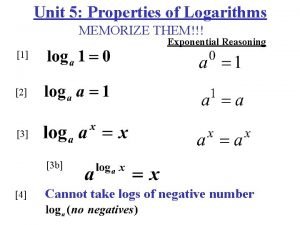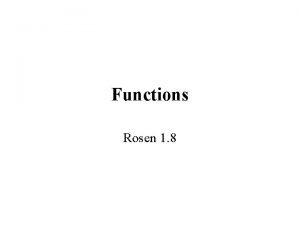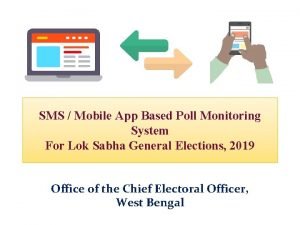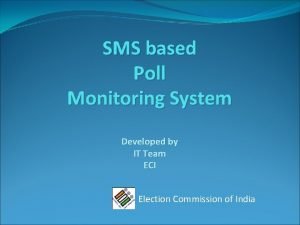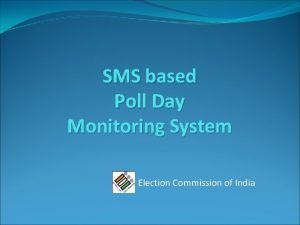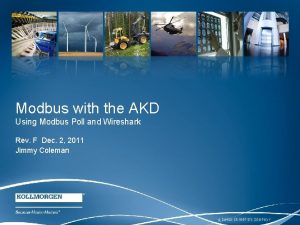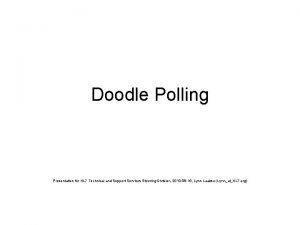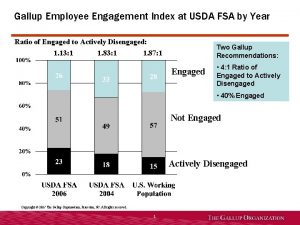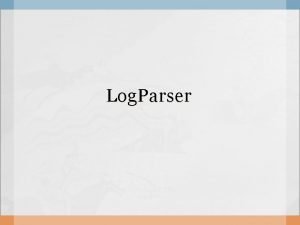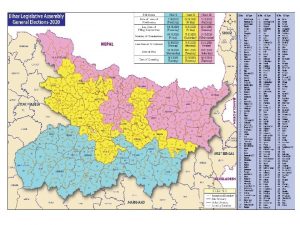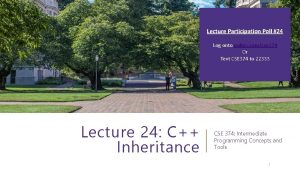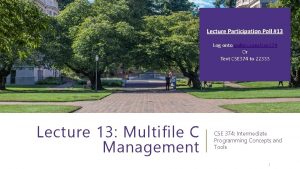Log onto Twitter and take our poll and




















































- Slides: 52

Log onto Twitter and take our poll and submit questions @OCschoolpsychs

Psychoeducational Reports 101

What will you take away from this training? • Better Understanding of Standardized Testing Terms • Better Understanding of Cognitive Tests, what they measure and when they are used • Better Understanding of Academic Tests and their purpose in assessments • Better Understanding of Adaptive Rating Scales and Behavior Rating Scales • Better Understanding of the difference between Educational Eligibility vs. Clinical Diagnosis

What is a standardized test • A Standardized test is a test that is given in a consistent or “standard” manner. Standardized tests are designed to have consistent questions, administration procedures, and scoring procedures. When a standardized test is administrated, is it done so according to certain rules and specifications so that testing conditions are the same for all test takers. Standardized tests come in many forms, such as standardized interviews, questionnaires, or directly administered intelligence tests. The main benefit of standardized tests is they are typically more reliable and valid than non-standardized measures. They often provide some type of “standard score” which can help interpret how far a child’s score ranges from the average.


Why do we use standardized tests • Because large numbers of students throughout the country take the same test, they give educators a common yardstick or ``standard'' of measurement. • When we are evaluating a child for a possible disability, we must compare how that child performs compared to other children the same age nationally. This eliminates local biases and impressions that may be skewed by personal perceptions.

What is meant by “normreferenced” • In norm-referenced testing a child’s performance is compared with the performance of a specific group of subjects. This type of testing provides an indication of typical performance of that group. For instance we can compare 6 year olds to other 6 year olds nationally.

Standardized Testing VS Teacher Made Tests Standardized Test Teacher Made Tests • Content is appropriate to assess all students • Specific content addressed in class • Items have been researched to reliably predict an outcome • There are standardized administration and scoring rules that cannot be modified • Scores can be compared to norm groups • Items have not been researched • Teacher decides how to administer and score the test. Can be modified to for individual students or classes • Score comparisons can only be made to the group who took the same test in the same conditions (local, class specific comparisons)

What are Standard Scores • Standard scores are raw scores that have been transformed to have a mean and standard deviation. Most cognitive and achievement testing have a mean score of 100 and a standard deviation of 15. Standard scores are good for comparing test results over time.

What are Percentile Ranks • This score ranks individuals within a group on a scale of 1 -99 with 50 being average. There isn’t a 100 th percentile because a child can’t do better than himself. A percentile rank of 75 means the student scored better than 75 percent of the other students in his or her norm group, and 25 percent scored as well or better than this student. It does not mean the student got 75% of the items correct. Percentile does NOT refer to the percent of questions that were answered correctly.

Normal distribution • The majority of student scores will fall within one standard deviation of the mean. For instance on most cognitive or academic tests the mean is 100 and the standard deviation is 15. This means that the majority of students will score somewhere between 85 -115. • The average range covers everyone who scores from the 16 th percentile to the 84 th percentile. • This range accounts for 68% of the general population.


Add a Slide Title - 3

• PAR Toolkit is a free app that has tool that allows you to input scores and convert them to standard scores, scaled scores, percentiles, z scores or T scores. It also has an age calculator and some other functions.

Age and Grade Equivalent Scores • Age equivalent scores and grade equivalent scores are obtained by determining the average score obtained on a test by different groups of children who vary in age or grade placement. • For example, if the average score of 10 year old children on a test is 15 items correct out of 25, then any child obtaining a score of 15 receives an age equivalent score of 10 -0. We find an average equivalent score by computing the mean raw score on a test for a group of children of a specific age. Likewise, grade equivalent scores are obtained by computing the mean raw score on a test obtained by children in a specific grade.

• These scores require careful interpretation • The scores may not represent equal units. • The scores encourage comparison with inappropriate groups. • Identical scores may mean different things. • They assume growth is consistent throughout the school year. • The National Association of School Psychologists explains age and grade equivalent scores with the following example: • “If Jacob’s performance on the test of reading comprehension is equal to an age equivalent of 8. 7 years and a grade equivalent of 2. 6, this means that his obtained raw score is equivalent to the same number of items correct that is average for all 8 year, 7 month old children in the norm group on that particular reading comprehension test. “

Cognitive Testing Norm referenced Follow standardized testing procedures for test administration Results are given as standard score with percentile rank Scores provide you insight into the problem solving skills of a child


• Wechsler Intelligence Scale for Children – Fifth Edition (WISC-V) • Stanford-Binet Intelligence Scales: Fifth Edition (SB -5) Commonly Used Cognitive Batteries • Woodcock Johnson Tests of Cognitive Abilities – Fourth Edition (WJ-IV) • Wechsler Preschool and Primary Scale of Intelligence –Fourth Edition (WPPSI-IV) • Kaufman Assessment Battery for Children-Second Edition (KABC-II)


When are Cognitive Batteries Given? • Cognitive Impairments – Mild Mental Disability – Functional Mental Disability – Developmental Delay Cognition • Specific Learning Disability • Rule out

Areas Assessed with Cognitive Batteries • Verbal skills • Nonverbal skills • Memory skills • Processing Speed skills • Full Scale IQ

Implications of Cognitive Scores • IQ Stability • Lower Full Scale IQ could indicate cognitive impairment • Discrepancy could indicate SLD • High scores could indicate giftedness • Subscale score could indicate strengths and weakness that may impact academic skills – Verbal versus nonverbal skills – Working memory – Processing speed

Academic Testing • Norm-referenced tests • Follow standardized testing procedures for test administration • Can administer entire tests or selected subtests, depending on the area of concern included in referral • Results are given as standard score with percentile rank • Scores can be compared with I. Q. scores to give further information


• Kaufman Test of Educational Achievement-Third Edition (KTEA-3) • Wechsler Individual Achievement Test-Third Edition (WIAT-3) • Woodcock Johnson Tests of Achievement-Fourth Edition (WJ-IV) • Other measures that look at specific skills Commonly Used Academic Tests – Feifer Assessment of Reading (FAR) – Feifer Assessment of Math (FAM) – Comprehensive Test of Phonological Processing – Second Edition (CTOPP-2)

Areas Assessed with Academic Tests • Basic Reading • Reading Comprehension • Reading Fluency • Math Calculation • Math Reasoning • Written Expression • Oral Expression • Listening Comprehension • These coincide with the 8 categories of Specific Learning Disability (SLD)

When Are Academic Tests Given? Required for Eligibility • Specific Learning Disability (SLD) • Mild Mental Disability (MMD) • Functional Mental Disability (FMD) • To get a baseline of functioning compared with peers • Best practice to get a comprehensive evaluation of overall student functioning (strengths/weaknesses)

Interpretation of Academic Test Results • Expect a student’s academic scores to correlate with his/her I. Q. scores • When academic scores and I. Q. scores do not correlate, we look at reasons why – Specific Learning Disability: significant discrepancy between student’s I. Q. and academic scores in any of the 7 SLD areas – Other factors: attention/focus difficulties or behavioral problems that have interfered with acquisition of skills – Can have a weakness in a certain area that is not significant enough to be a “disability” • Low academic scores alone do not indicate the presence of a disability – Commensurate with IQ (example: Full Scale I. Q. of 80 and academic scores ranging from 75 -85) • Cognitive Impairment – Student with MMD or FMD would have commensurate I. Q. and academic scores but both would be low (similar range) – May present with strong rote skills (basic reading, math computation) but have lower skills when applying knowledge (reading comprehension, math reasoning, written expression)

Rating Scales • ADAPTIVE BEHAVIOR RATING SCALES • BEHAVIOR RATING SCALES

What is adaptive behavior? • Adaptive Behavior is a person’s “everyday competence” - defined as practical, every day skills needed to function and meet the demands of one’s environments, including skills necessary to effectively and independently take care of oneself and to interact with other people.


Adaptive Behavior Rating Scales • Standardized, Norm-reference rating scales • Parents, teachers and individuals have separate rating scales to complete • Can be completed by a rater or through interview • Results are given as standard score with percentile rank • Scores can be compared with I. Q. scores and academic skills to provide information for overall profile of an individual • Required for some areas of eligibility

• Adaptive Behavior Assessment System – Third Edition (ABAS-III) – Spanish and English – Caregiver/parent and Daycare/Teacher Versions – Infant-Adult Commonly Used Adaptive Behavior Rating Scales • Scales of Independent Behavior-Revised (SIB-R) – Infancy – 80 Years – 45 -60 min(full) 15 -20 (abbreviated) • Vineland Adaptive Behavior Scales, Third Edition – Spanish and English – Caregiver/Parent and Daycare/Teacher versions – Infant to 90 years

Areas Assessed with Adaptive Behavior Rating Scales • Communication • Daily Living Skills/Independent Living Skills • Concepts/Reasoning • Motor or Physical Skills • Social Competence • Maladaptive Behaviors (Can overlap with behavior rating scales)

When Are Adaptive Behavior Ratings Given? Required for Eligibility • Mild Mental Disability (MMD) • Functional Mental Disability (FMD) • Traumatic Brain Injury (possibly) • Developmental Delay (Selfhelp/Adaptive) • To get a baseline of functioning compared with peers • Best practice to get a comprehensive evaluation of overall student functioning (strengths/weaknesses) when student had multiple areas of need

Considerations with Adaptive Behavior Ratings • The purpose of measuring adaptive behavior is for eligibility and/or for program planning and/or review. • Providing objective, accurate ratings for a students based on the scoring criteria of instrument is paramount to obtaining accurate results and determining eligibility. • Attend to how prompt is worded (with/without prompting), does independently, does sometimes, needs supports.

Interpretation of Adaptive Behavior Rating Results • All students have strengths and weaknesses across development areas; weakness is not a disability. • Autism Spectrum Disorders – Many students demonstrate deficits in one or more areas of adaptive behavior – While not required for eligibility, may be helpful for programming • Cognitive Impairment – Student with MMD or FMD would be expected to exhibit commensurate I. Q. , academic, and adaptive behavior scores - in the low range – After a focus or concentration on adaptive skills through specially designed instruction programming, some students with cognitive deficits may develop a personal strength in adaptive behavior skills, but still struggle in novel settings with independent skills. Traumatic Brain Injury Can be an area of eligibility and area for programming

BEHAVIOR RATING SCALES

Behavior Rating Scales • Standardized, Norm-reference rating scales • Parents, teachers and individuals (Self-rating) have separate rating scales to complete • Results are often given as a T-score with percentile rank • Required for some areas of eligibility


• Conners Comprehensive Behavior Rating Scales (CBRS) • Behavior Assessment for Children, 3 rd Edition (BASC-3) • Achenbach Child Behavior Checklist Commonly Used Behavior Rating Scales Comprehensive Behavior rating scales

• ADHD – Conners 3 • Autism – Autism Spectrum Rating Scale (ASRS) – Gilliam Autism Rating Scale, Third Edition (GARS-3) Commonly Used Behavior Rating Scales Eligibility – Diagnostically specific rating scales • Executive Functioning – Comprehensive Executive Functioning Inventory (CEFI) – Behavior Rating Inventory of Executive Function (BRIEF)

Areas Assessed with Behavior Rating Scales • Externalizing vs Internalizing Behaviors • Overall Behavior index • Behaviors associated diagnoses: Anxiety, Depression, ADHD, Oppositional Defiant Disorder, Conduct Disorder, Autism Spectrum Disorders • Scales specific to concerns with ADHD behaviors • Scales specific to concerns with Autism Spectrum Disorders


When Are Behavior Ratings Given? Required for Eligibility • Emotional Behavioral Disability (EBD) • Other Health Impairment -ADHD (OHI) • Developmental Delay (Social. Emotional) • Autism • Traumatic Brain Injury (possibly) • To get a baseline of functioning compared with peers if there areas of concern • Best practice to get a comprehensive evaluation of overall student functioning (strengths/weaknesses), especially when student had multiple areas of need • For programming purposes if social/emotional needs are a impact of another disability or an additional concern


Interpretation of Behavior Rating Results • All students have strengths and weaknesses across development areas; weakness is not a disability. • Behaviors are rated as – Clinically significant/Highly elevated (T score >70)Cognitive Impairment – At-risk/Elevated (T score 60 -69) – Typcial range • Behaviors ratings show correlation with others in sample with specific diagnoses

INITIAL EVALUATION REPORTS An evaluation report may include: A. child identification information (i. e. , name, parents, phone, date of birth, grade, school) B. reason the student was referred for assessment C. the full name of instruments and procedures used, list of names and professional roles of all evaluators, the date each was administered, any departures from standard test administration procedures and the reasons for that departure D. background information including developmental and educational histories and intervention information E. behavior observations F. data and sources from standardized, norm-referenced measures which include standard scores and not solely percentiles, grade, or age equivalents; are reported with confidence intervals; and are in a form that allows for inter-test comparisons G. an explanation of any discrepancies among evaluation results, e. g. , between formal test results and the customary behaviors and daily activities of the child H. statements about specific classroom tasks or contexts that are unique to the child (e. g. , error pattern analysis, learning style or learning preferences; incentives or motivational style; communication and interpersonal skills) I. conclusions and recommendations

RE-EVALUATION REPORTS Re-evaluation may include: (i) evaluations and information provided by parents; (ii) current classroom-based, local, or state assessments and classroom-based observations; and (iii) observations by teachers and related services providers. An ARC may summarize the data review and complete a Re-evaluation Report in lieu of a formal evaluation. The completed Re-evaluation Report is used as the Written Report and the ARC completes the eligibility for the re-evaluation process utilizing that data.

Medical Diagnosis, Clinical Diagnosis and Educational Classification Medical Diagnosis: A diagnosis given by a health care provider/physician to determine which disease or condition is causing a person’s symptoms. The diagnosis is generally provided using the codes from the International Classification of Diseases Tenth Revision (ICD-10). Clinical Diagnosis: The Diagnostic and Statistical Manual of Mental Disorder Fifth Edition (DSMV) is a classification and diagnostic tool utilized by mental health professionals with highly specialized training in the diagnosis and psychological treatment of mental, behavioral and emotional illnesses. Educational Classification: A process/procedure where by a School Based Admissions and Release Committee determine eligibility for special education services in one of thirteen disability categories outlined by the Kentucky Administrative Regulations. BIGGEST DIFFERENCE BETWEEN CLINICAL AND EDUCATIONAL DIAGNOSIS IS THE IMPACT THE CONDITION HAS ON STUDENT LEARNING.

Find us on Twitter @OCschoolpsychs
 Jika log 2 = 0 301 dan log 3 = 0 477
Jika log 2 = 0 301 dan log 3 = 0 477 Jika log 2 = 0, 301 maka nilai log 8 adalah
Jika log 2 = 0, 301 maka nilai log 8 adalah Nilai dari 5log 10 + 5log 50 - 5log 4 adalah
Nilai dari 5log 10 + 5log 50 - 5log 4 adalah Log 2 = 0, 301
Log 2 = 0, 301 Jika log 2=0 301 nilai log 32 adalah
Jika log 2=0 301 nilai log 32 adalah Nilai dari ³ log 27 adalah
Nilai dari ³ log 27 adalah Jika panjang ap 8 cm bq 5 cm
Jika panjang ap 8 cm bq 5 cm Penyelesaian pertidaksamaan log(x-4)+log(x+8) log(2x+16)
Penyelesaian pertidaksamaan log(x-4)+log(x+8) log(2x+16) Take a bus or take a train
Take a bus or take a train Natural logarithm has the base
Natural logarithm has the base Power law log log plot
Power law log log plot Power law log log plot
Power law log log plot How do you get rid of ln
How do you get rid of ln Loga mn
Loga mn Experiment 343
Experiment 343 Log to ln
Log to ln Persamaan 7 log 217 + 7 log 31 ialah
Persamaan 7 log 217 + 7 log 31 ialah What is a logarithm
What is a logarithm Desmos logs
Desmos logs Modelo log lin
Modelo log lin Quotient property of logarithms examples
Quotient property of logarithms examples Log m-log n
Log m-log n Buffer capacity formula
Buffer capacity formula Log exponent rules
Log exponent rules Hyper log log
Hyper log log Our awareness of ourselves and our environment
Our awareness of ourselves and our environment Awareness of ourselves and our environment is:
Awareness of ourselves and our environment is: Awareness of ourselves and our environment is
Awareness of ourselves and our environment is Our awareness of ourselves and our environment.
Our awareness of ourselves and our environment. Thinking affects our language which then affects our
Thinking affects our language which then affects our Our census our future
Our census our future Bernadette farrell christ, be our light
Bernadette farrell christ, be our light Our life is what our thoughts make it
Our life is what our thoughts make it We bow our hearts
We bow our hearts Our census our future
Our census our future Our life is what our thoughts make it
Our life is what our thoughts make it Money madness summary pdf
Money madness summary pdf God our father christ our brother
God our father christ our brother Our future is in our hands quotes
Our future is in our hands quotes Rosen function
Rosen function Dot
Dot Find the scalar and vector projections of b onto a
Find the scalar and vector projections of b onto a Bsimm
Bsimm Poll monitoring system app
Poll monitoring system app Poll monitoring system
Poll monitoring system Sms based poll monitoring system
Sms based poll monitoring system Poll.ev.com
Poll.ev.com Modbus rtu wireshark
Modbus rtu wireshark What is the answer
What is the answer Digital bank robbery
Digital bank robbery Jim crow (character)
Jim crow (character) Doodle admin link
Doodle admin link Gallup engagement index
Gallup engagement index







